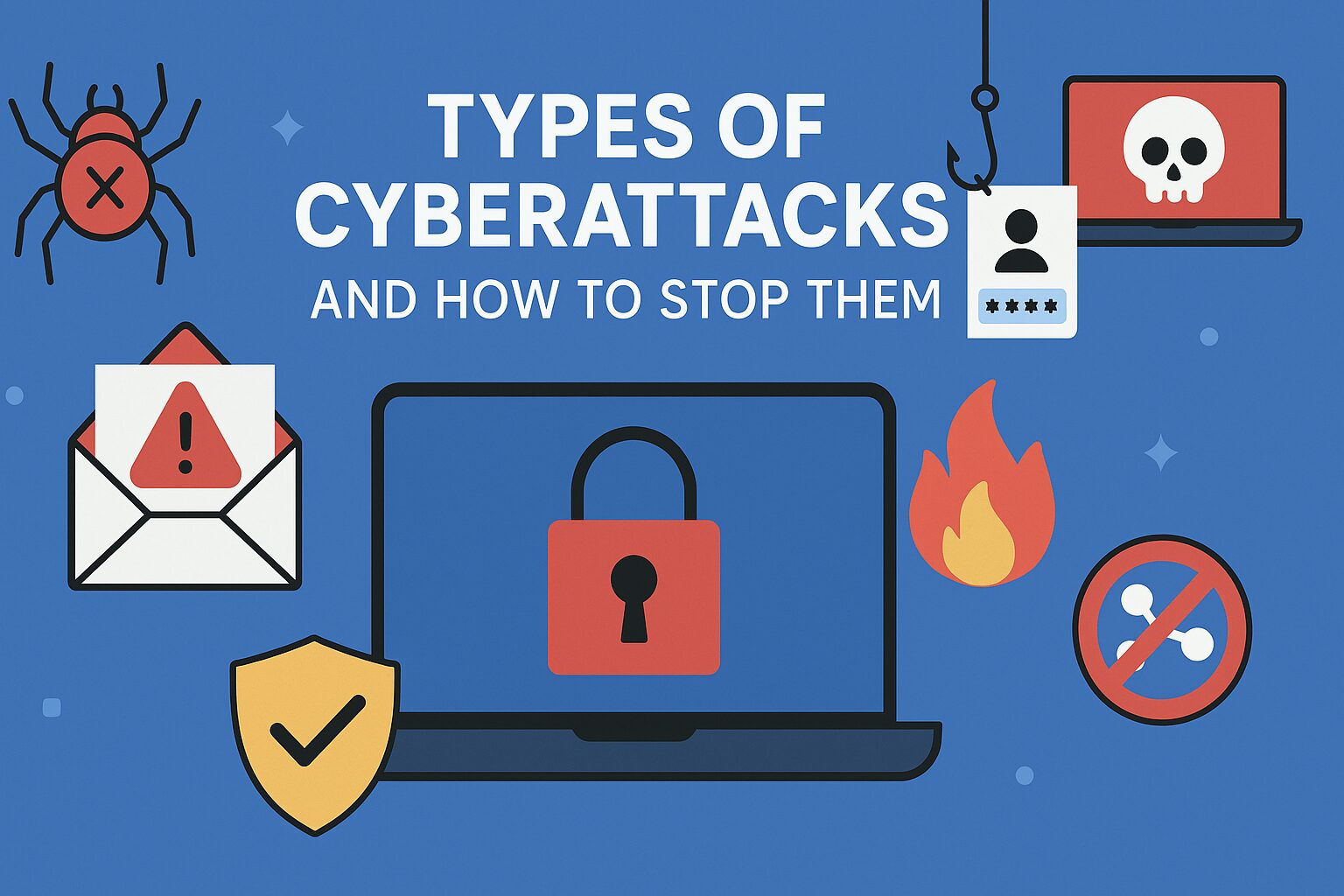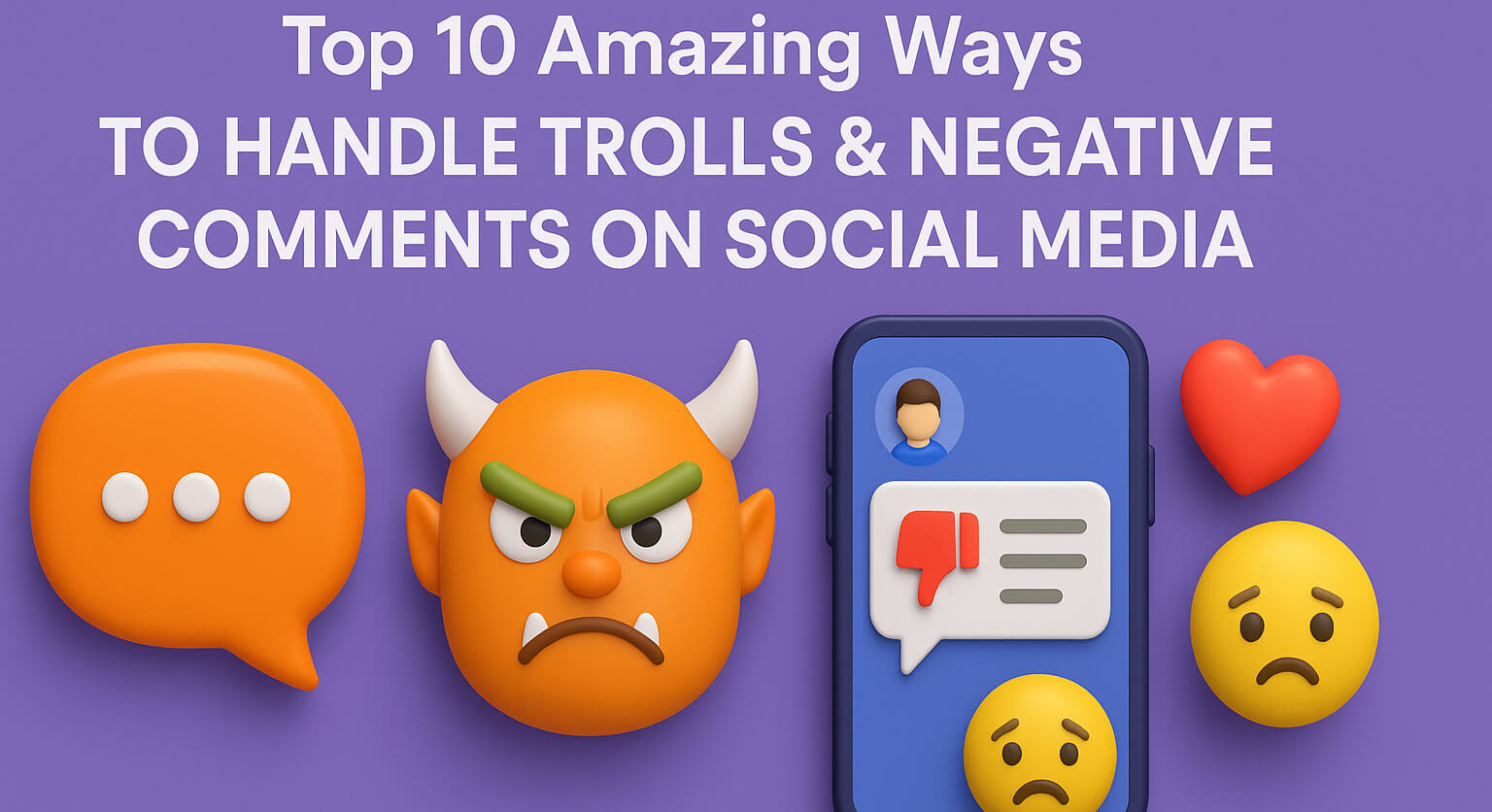
Top 10 Types of Cyberattacks and How to Stop Them
Cyberattacks are becoming more common in the digital world. Sensitive data is often stolen by unknown attackers. Personal and business systems are being targeted every day. Online threats are spreading fast and harming many users.
Hackers use
various methods to break into secure networks. If not protected, systems can be
damaged or destroyed. User data can be leaked without any warning signs.
Important files can be locked or deleted in minutes.
Business
operations can be stopped by a simple attack. Financial losses are being faced
by many companies worldwide. To stay safe, basic knowledge of cyberattacks is
required. Prevention methods should be followed to reduce such risks.
Check out these ten
types of cyberattacks and ways how to prevent them shared by our Data
science consulting services in India experts -
Phishing Attacks
These are done
to steal sensitive user information. Fake emails or messages are sent by
cybercriminals. Users are tricked into clicking unsafe links. Fake websites are
created to collect login details. Bank accounts and passwords are often
targeted. Personal data is stolen without the user’s knowledge. These attacks
are increasing across emails, websites, and messages.
How to Protect
Phishing emails
should be checked for strange links or errors. Unknown senders must be avoided
at all times. Links in suspicious emails should not be clicked. Email addresses
must be verified before replying. Antivirus tools can help block unsafe websites.
Awareness should be raised through training and tips. Security software should
be updated to detect threats early.
Malware Infections
Malware is
harmful software used to damage or steal data. Devices are infected through
unsafe downloads or email attachments. Files can be deleted or locked without
any warning. Spyware, viruses, and worms are types of malwares. User activity
is tracked without their permission. Systems become slow or stop working
completely. Malware is often hidden in trusted-looking programs or websites.
How to Protect
Trusted
antivirus software should be installed and kept updated. All downloads must be
taken from safe, verified sources. Email attachments from unknown senders
should not be opened. USB drives must be scanned before being used. Suspicious
apps should be removed right away. Regular system scans must be performed to
find threats. Firewalls should be enabled to block unwanted access.
Ransomware Attacks
Ransomware is
malicious software that locks users out of files. Files are encrypted which makes
them impossible to access without a decryption key. Attackers demand a ransom
in exchange for restoring access. These attacks often spread through email
attachments or infected websites. Victims are threatened with permanent data
loss. Business operations can be disrupted severely by ransomware attacks.
How to Protect
Regular backups
should be made and stored securely. Backup files must be kept offline or in the
cloud. Email attachments and links from unknown sources should be avoided.
Operating systems and software must be updated regularly. Antivirus programs
can detect and block ransomware threats. Strong network security and firewalls
should be used to prevent infections.
Denial of Service (DoS)
A Denial of
Service (DoS) attack aims to overload a system. Attackers send excessive
traffic to a website or server. The target system becomes slow or stops working
completely. Legitimate users are unable to access the site or service. This
type of attack is usually done by flooding the target with requests. It can
disrupt business operations and cause financial loss.
How to Protect
Firewalls should
be configured to block harmful traffic. Intrusion detection systems can help
spot unusual activity. Load balancing can distribute traffic across multiple
servers. Websites should use content delivery networks (CDNs) to manage high
traffic. Regular monitoring for abnormal spikes in traffic is important. DoS
protection services can help mitigate large-scale attacks.
Man-in-the-Middle (MitM)
A Man-in-the-Middle
(MitM) attack occurs when data is intercepted. Attackers secretly place
themselves between two communicating parties. They can monitor or modify the
data being exchanged. Sensitive information, like passwords or credit card
details, is often targeted. This type of attack happens over unsecured
networks, such as public Wi-Fi. It allows hackers to steal data without the
victim knowing.
How to Protect
Secure
connections like HTTPS should always be used on websites. Public Wi-Fi should
be avoided for sensitive activities. Virtual Private Networks (VPNs) can
encrypt data and protect privacy. Websites should have SSL certificates to
ensure secure communication. Avoid logging into important accounts over
unsecured networks. Multi-factor authentication (MFA) can add extra layers of
security.
SQL Injection
SQL injection is
an attack where harmful code is inserted into a website’s database. Attackers
use vulnerable input fields to send malicious SQL queries. These queries can
delete, alter, or steal sensitive data from databases. Websites that don’t
properly check user inputs are at risk. SQL injection can give hackers full
access to the system's backend.
How to Protect
User inputs
should be validated and sanitized before being processed. Prepared statements
and parameterized queries should be used. Input fields must not accept
unexpected data types. Error messages should be limited to avoid revealing
system details. Regular security testing and vulnerability scans should be
performed. Web applications should be updated with the latest security patches.
Zero-Day Exploits
Zero-day
exploits take advantage of software vulnerabilities that are not yet known.
Attackers exploit these flaws before the software developers can release a fix.
These vulnerabilities are called "zero-day" because no patch or
defense exists at the time. Zero-day attacks can compromise systems, steal
data, or cause damage without warning. They are particularly dangerous due to
the lack of protection.
How to Protect
Systems should
be updated immediately when patches are released. Automatic updates should be
enabled for critical software and applications. Security tools that detect
unknown vulnerabilities can help protect systems. Software vendors should be
followed for announcements of fixes. Regular vulnerability scans should be
conducted to identify weaknesses. Strong network security and firewalls can
help block these attacks.
Password Attacks
Password attacks
occur when hackers attempt to guess or steal passwords. Attackers may use
methods like brute force, where every possible combination is tried. Sometimes,
passwords are obtained through phishing or social engineering. Once the
password is cracked, unauthorized access to accounts or systems is gained.
Sensitive data or systems can then be exposed or altered.
How to Protect
Strong and
unique passwords should be created for each account. Passwords must be at least
12 characters long, including numbers and symbols. Multi-factor authentication
(MFA) should be enabled wherever possible. Password managers can securely store
and generate passwords. Passwords should be changed regularly to prevent
unauthorized access. Login attempts should be monitored for unusual activity.
Spyware Intrusion
Spyware is
malicious software that secretly tracks a user’s activities. It can monitor
browsing habits, keystrokes, or even access private information. This data is
then sent to hackers for exploitation. Spyware is often hidden in free software
or websites. It can slow down devices and compromise user privacy without the
user’s knowledge.
How to Protect
Regular scans
should be performed using antivirus software. Suspicious programs should be
removed immediately. Downloads must only be made from trusted sources.
Operating systems and apps should be kept up to date. Privacy settings on
devices should be reviewed and tightened. Ad-blockers can help prevent unwanted
spyware from being installed.
Social Engineering
Social
engineering is a method where attackers manipulate people into revealing
sensitive information. This is done by exploiting human psychology rather than
technical weaknesses. Hackers may impersonate trusted individuals or
organizations. They trick users into giving out personal details, passwords, or
financial information. Social engineering attacks often take place through
emails, phone calls, or in-person interactions.
How to Protect
Staff should be
trained to recognize suspicious requests. Personal information should not be
shared with unknown callers or emails. Multi-factor authentication (MFA) should
be used to add extra layers of security. Verification processes must be
followed for sensitive transactions. Employees should always report unusual
requests or behavior. Awareness of common social engineering tactics should be
increased.
Who We Are?
We are a leading
website designing and
development company in India offers
range of IT services.






